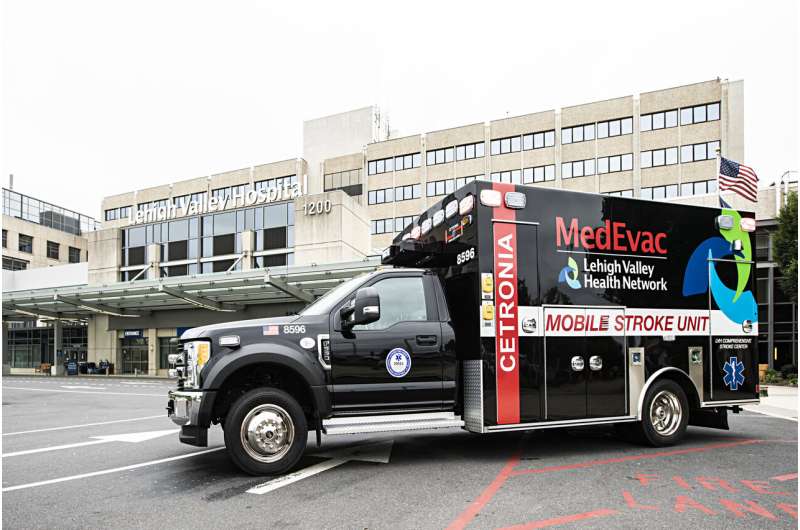Life-saving role of mobile stroke units at risk due to reimbursement limitations

Ambulances with specialized staff and equipment to provide rapid stroke treatment report financial difficulties due to limited reimbursement from health care insurers, according to preliminary research to be presented at the American Stroke Association's International Stroke Conference 2021.
According to the most recent comprehensive data from the Centers for Disease Control and Prevention (CDC),stroke is the fifth leading cause of death in the United States and a major contributor to long-term disability. Stroke occurs when a blood vessel to or in the brain either becomes blocked or bursts, preventing blood and oxygen from reaching all of the brain. Treatment to quickly restore blood flow to the brain is essential to improve outcomes and survival.
Mobile stroke units are ambulances with specialized staff and equipment to quickly diagnose and treat stroke on the way to the hospital. When every minute is critical, the mobile stroke unit staff can administer medications to restore blood flow, control bleeding or lower high blood pressure before reaching the emergency department. However, mobile stroke units are not widely available, in part because there are no established means for the government or insurance companies to reimburse the costs of care provided by mobile stroke units, especially when specialized tests (CT scans, etc.) and medications are administered outside of a hospital.
"If mobile stroke units cannot be reimbursed for the important care they provide, this vital service will be lost unless private donors are willing to continually step up to support these programs," said study lead author Kenneth Reichenbach, M.S.N., F.N.P.-C., A.G.A.C.N.P.-B.C., B.S.R.T.-(R), PHRN, program director of the Mobile Stroke Unit at Lehigh Valley Health Network in Allentown, Pennsylvania. "We need overwhelming, united support for this to change within federal entities including the Centers for Medicare and Medicaid Services to explore appropriate pathways for Medicare reimbursement for the full range of advanced mobile stroke unit services."
Through a blinded survey, researchers collected information in June 2019 (to reflect the previous 12 months of their operation) from all 20 U.S. mobile stroke unit programs. Of the 19 units that responded, 18 reported negative financial status while one, classified as an outpatient clinic and not an ambulance, reported a positive financial status. All mobile stroke programs depend at least partly on funding from personal gifts, grants or institutional support because of billing restrictions from health care insurers.
In other findings, the programs reported administering critical clot-busting medications to stroke patients an average of 72 times per year (median of 30) over the 12 months surveyed for all mobile stroke unit programs combined. Each program is open and available nearly every day of the month, with 600 responses per year, on average, for all programs combined. All mobile stroke units can perform CT scans (computed tomography) to image the brain, and 21% have an additional certification as certified CT mobile laboratories. Each mobile stroke unit has an average of four staff members on board at a time, which may include a CT technologist, paramedic/emergency medical technician, stroke nurse and a stroke expert. Individuals working as stroke experts vary by program: 37% have medical doctors and 16% have an advanced practice health care professional. In 47% of the programs, telemedicine is used instead of an on-board expert to connect remotely to a stroke expert.
"Mobile stroke units diagnose and treat patients with acute stroke safely and considerably faster than patients arriving to an emergency department by regular ambulance or private auto," Reichenbach said. "Saving brain tissue could translate into better functional outcome and quality of life for many more stroke patients."
The American Heart Association's 2019Recommendations for the Establishment of Stroke Systems of Caresuggests reimbursement is an issue that warrants further investigation before there is widespread use of mobile stroke units.
To recognize stroke symptoms requiring immediate treatment, the American Stroke Association recommends everyone remember the acronym FAST for face drooping, arm weakness, speech difficulty, time to call 9-1-1. Fortunately, most strokes are preventable through healthy lifestyle choices: not smoking; eating healthy foods; being physically active; maintaining a healthy body weight; and controlling high blood sugar, cholesterol and blood pressure.

















